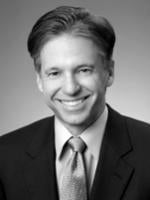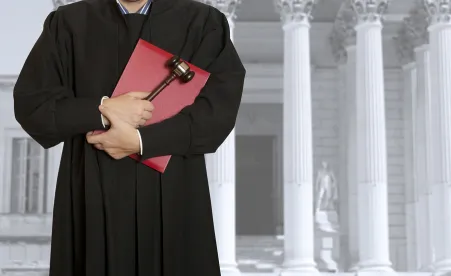In Resh v. China Agritech, No. 15-5543, 2017 U.S. App. LEXIS 9029 (9th Cir. May 24, 2017), a Ninth Circuit panel held that a pending putative class action in which class certification is ultimately denied tolls the statute of limitations as to claims that previously absent class members later seek to assert as class claims. The ruling expands a tolling doctrine the U.S. Supreme Court has so far only applied to absent class members’ individual claims. See American Pipe & Construction Co v. Utah, 414 U.S. 538 (1974). It also clarifies Ninth Circuit precedent, which, to the extent it had previously applied American Pipe tolling to absent class members’ class claims, arguably did so only when the earlier class certification denial rested on the named plaintiff’s inadequacy, not on the invalidity of the alleged class itself. Resh applies American Pipe to class claims without qualification. Hence, it opens the door in the Ninth Circuit to new phenomenon: successive class actions based on the same underlying event.
In Resh, investors filed a putative securities fraud class action against China Agritech and its managers and directors. The case arose from a market research report (the “Report”) claiming that China Agritech was not operating as a real business, which tanked the price for its publicly traded shares. The investors had been unnamed plaintiffs in two earlier would-be class actions against many of the same defendants based on the same underlying events. Both had been filed within the applicable two-year statute of limitations and voluntarily dismissed after the district court denied class certification. Grounds for rejecting class action status included plaintiffs’ failure to invoke the necessary fraud-on-the-market presumption of reliance by showing that China Agritech’s stock traded in an efficient market. By the time the named plaintiffs in Resh filed their own class action, more than three years had passed since the Report.
In opposing defendants’ motion to dismiss the complaint as time-barred, plaintiffs argued that the two earlier class actions had tolled 804 of the 1243 days elapsing since the Report’s release, causing only 439 days of the two-year limitations period to run. The district court disagreed, observing that American Pipe only suspends the statute of limitations for absent class members’ individual claims and not “for an entirely new class action based upon a substantially identical class.” In rejecting plaintiffs’ tolling argument, it reasoned a contrary ruling “would allow tolling to extend indefinitely” and lead to repeated class certification attempts merely “on the basis of different expert testimony and/or other evidence.’”
The Ninth Circuit panel reversed. It framed the issue by noting that no time bar prevented plaintiffs from aggregating their individual claims via joinder. The issue was only whether Rule 23 aggregation was time barred. Although the defendants argued that Ninth Circuit precedent permitted class-claim tolling, if at all, only when the earlier class certification denial rested on deficiencies associated with the named plaintiff (which was not the case here), the panel called this a misreading. It attributed any prior Ninth Circuit-imposed limitation on successive class claims to the application of “preclusion and preclusion-related principles,” not tolling. It identified several recent Supreme Court decisions (Shady Grove Orthopedic Associates, P.A. v. Allstate Insurance Co., 559 U.S. 393 (2010); Smith v. Bayer Corp., 564 U.S. 299 (2011); Tyson Foods, Inc. v. Bouaphakeo, 136 S. Ct. 1036 (2016)) that it found “confirmed” the correctness of this view. For example, according to the panel, Shady Grove illustrates that Rule 23 operates independent of other laws, including statutes of limitation, such that, if tolling principles allow a plaintiff to timely pursue a claim individually, they allow the plaintiff to assert it as a class claim.
Extending American Pipe, the panel remarked: “permitting future class action named plaintiffs . . . to avail themselves of American Pipe tolling advance[s] the policy objectives that led the Supreme Court to permit tolling in the first place.” According to the panel, tolling creates no unfair surprise because the prior class suit will have already alerted the defendant to the substantive claims being brought against it and “the number and generic identities of the potential plaintiffs who may participate in the judgment.” In addition, it promotes judicial economy by eliminating the need for absent class members to file duplicative, protective class actions before the expiration of their own limitations period.
Notably, the panel downplayed any concerns that its ruling might lead to unlimited successive class actions, speculating that “if it is clear that a proposed class is not viable under Rule 23, as evidenced by an earlier federal court decision, potential future plaintiffs (or, more precisely, their attorneys) will have little to gain from repeatedly filing new suits.” It also posited that “[a]ttorneys who are going to be paid on a contingency fee basis, or in some cases based on a fee-shifting statute, at some point will be unwilling to assume the financial risk in bringing successive suits” (emphasis added). In its view, “preclusion and comity” will be effective to limit absent class members from relitigating previously rejected class action arguments and proof.
The Ninth Circuit’s new rule conflicts with a majority of circuits that do not extend American Pipetolling to absent would-be class member’s own later-asserted class claims. It also could be subject to easy abuse. A class certification showing can rest on various grounds and forms of proof, presenting the possibility that absent class members will be able to fashion successive class claims similar enough to invoke American Pipe tolling yet different enough (by slight changes to the class definition or submitted proof) to escape preclusion and comity-type defenses. Indeed, it would have been helpful for the panel to have exactly explained how preclusion or comity principles will place effective limits on successive class action attempts as orders denying class certification are not on the merits and, ordinarily, have no binding effect on absent class members. The opinion may also underestimate the class action plaintiffs’ bar’s tenacity and ability to find new plaintiffs willing to serve as class representatives. One thing is certain, if the plaintiffs’ bar does not share the panel’s view of the downside risks, successive class actions based on the same underlying conduct will become a new reality in the Ninth Circuit.



 />i
/>i

